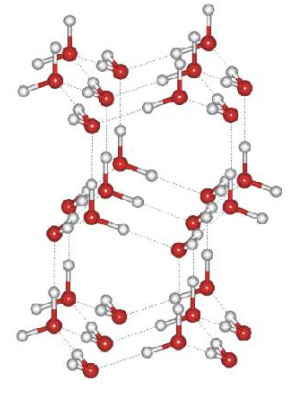
Stanford Synchrotron Radiation Laboratory
Stanford Linear Accelerator Center
|
Local Structure of liquid Water
Water molecules exhibit two types of interactions in the liquid and solid phases: strong covalent bonds within the molecule (O-H bonds) and relatively weak hydrogen bonds between them. In ice each molecule is coordinated by four neighboring waters through hydrogen bonds (two hydrogen bonds on the oxygen atom and one on each hydrogen). Although liquid water primarily is expected to have the same coordination environment, experimental (vibrational spectroscopy, neutron and x-ray diffraction) and theoretical (molecular dynamics) studies indicate that liquid water contains a fraction of molecules with broken hydrogen bonds. Still, despite intense investigations the local structure of liquid water is not understood to da te. The hydrogen bond in liquid water holds the key to the structure and properties of water, with implications for chemical, biological and geological processes. The dynamical motion of atoms at the picosecond (10-12 s) timescale causes the hydrogen bonds to break and reform resulting in a statistical distribution of different coordinations. What is the nature of the hydrogen bond in terms of changes in the electronic structure? Can we understand this on a molecular orbital level?
With x-ray absorption
spectroscopy (at the oxygen K-edge) as a probe of the empty electronic
states, we can locally characteri
ze the nature of hydrogen bonding
through the large effect of chemical bonding on the valence orbitals
of the water molecules. We can identify different local configurations
in the liquid and help solving the longstanding water puzzle. |

